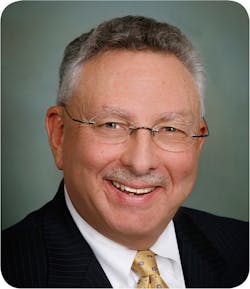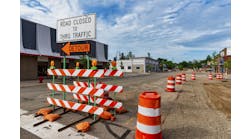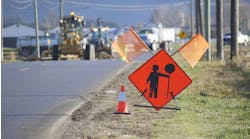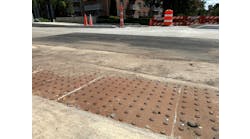If you were to conduct a study about how citizens in a specific region are getting from point A to point B, you would likely find that the number of miles traveled by vehicle is declining.
People are beginning to use other methods of transportation ranging from bikes to buses to subway systems and everything in between. But just because ridership of public transportation is rising doesn’t mean that congestion on highways and streets has been fixed. A new trend is emerging—location depending—but the future of transportation is anchored in maximizing mobility and will really start with a renewed outlook from cities and regions who can see the big picture.
We need to stop compartmentalizing elements of travel: for example, highways versus rail travel versus public transportation. If we continue to look at these forms of transportation independently, then we aren’t going to find the issues and we won’t be able to develop long-range solutions to maximizing overall mobility.
The new outlook must be focused on mobility—how people and goods are moving throughout an area. This mobility is ultimately what matters, not the number of vehicles that come through. When movement is seamless and coordinated, economies can prosper in a way that they couldn’t if there was too much congestion. So an increase in mobility directly affects the competitiveness of a region, leading to a higher quality of life for residents.
So how do cities and regions go about funding multimodal transportation in their areas? One answer lies in the use of tolling and/or road pricing. The idea of tolls supporting other transportation systems stems back to the overall mobility in a region and the competitiveness in the region and around the world.
Federal highway legislation isn’t what it once was, and the states don’t have money for transportation initiatives either. As a result, there isn’t sufficient funding to build new or maintain existing services.
Tolling is one answer to these issues, because that’s where a continuous revenue stream is found. While it’s true that commuters pay their way on public transportation, the fares are not enough to cover a system’s deficit and improve that individual mode of transportation. The cost of building and maintaining a transit system is much higher than one could imagine.
Take a look at the mass-transportation system in the New York metropolitan area. Millions of people use it every day to get to work or anywhere else they need to go. Imagine if the various rail and bus systems were under par and large numbers of those people drove instead. The amount of congestion on the roadways would be huge. In order to avoid that congestion and ensure the system’s quality, a decision was made to use toll money to subsidize other transportation needs.
In addition to New York City, several other regions—such as Philadelphia, San Francisco and Los Angeles—already have taken, or are beginning to take, a multimodal approach to relieving transportation stresses in their areas. Los Angeles, for example, is running a pilot program on its Express (HOT) Lanes system where bus riders get credits they can use toward tolls. For every 32 one-way, peak-hour transit trips riders take along more than a dozen routes, they earn $5 in toll credits that can be used along the same route. The idea behind this pilot is to hopefully convince people to try transit and ultimately become loyal riders.
The U.S. DOT also is helping three cities with high congestion rates around the country implement an integrated corridor management (ICM) pilot. Under the program, all transportation assets in a corridor are treated as part of a single system. This integrated approach means that all forms of transportation will be taken into account when deciding how to best keep traffic flowing. After a thorough data analysis, ICM could potentially be an inexpensive, yet effective tool to maximize mobility and link funding.
It is often difficult to win communal support for transportation projects or get people to use new systems. Individuals tend to look at their personal traveling habits rather than viewing transportation value in the context of improved regional mobility and longer-term quality of life. This is certainly not a surprise, but responsible government entities know that all modes of transportation need to be looked at not just as a part of their whole transportation picture, but rather as a part of their overall mobility picture, which feeds into the overall health of their region. We must refocus onto moving people and goods—not maximizing the overall number of vehicles.



